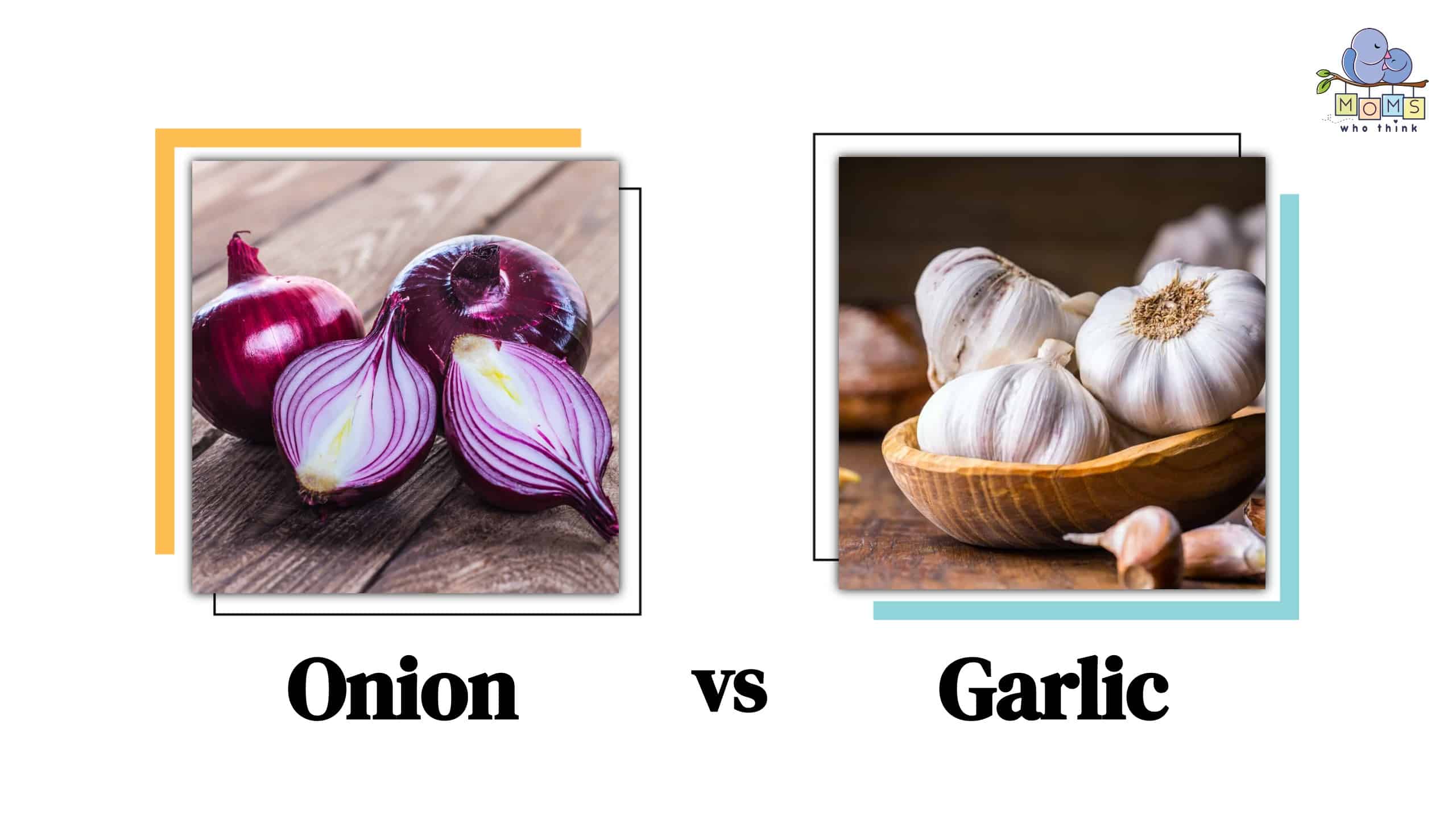Onions and garlic are key players in the culinary world. They add zest and tang to dishes in every country’s cuisine. These two vegetables are bulbous flowering plants that are part of the Allium family, along with shallots, spring onions, chives, and leeks. Onions and garlic while in the same family, have key differences in taste and appearance. Onions have a sweet, umami-rich taste that transforms when cooked to a sweet, savory bite. In comparison, garlic is more pungent with a stronger flavor. When it comes to onions vs. garlic, there are differences that make them non-interchangeable in recipes.
- The must-have convenient reference guide for every home cook!
- Includes more than 8,000 substitutions for ingredients, cookware, and techniques.
- Save time and money on by avoiding trips to grab that "missing" ingredient you don't really need.
What are Onions?
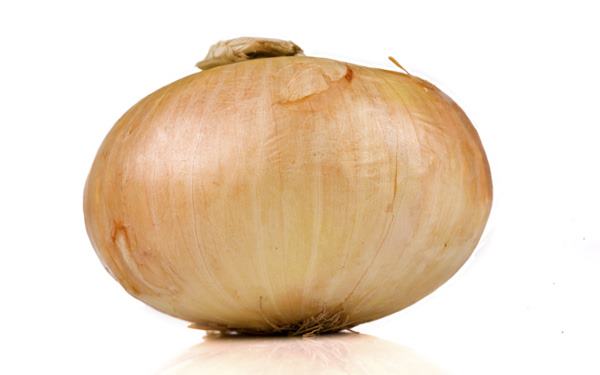
Onions are the base of many great recipes.
©iStock.com/jarenwicklund
Onions are a vegetable rich in antioxidants and sulfur-containing compounds. There are many varieties of onions, including yellow, white, sweet, red, green, and pearl. Each has a different flavor and is used in different ways.
According to the National Onion Association, onions are originally from Central Asia and have been consumed for the last 5000 years. In ancient Egypt, pharaohs were buried with onions, and the early Greeks not only consumed them but also rubbed them all over their bodies before athletic competitions. The Romans ate them and used them medicinally, and there is evidence that Pompeii had many onion gardens before the volcano took out the city. Onions are even mentioned in one of the first cookbooks dating back to the ninth century.
What is Garlic?
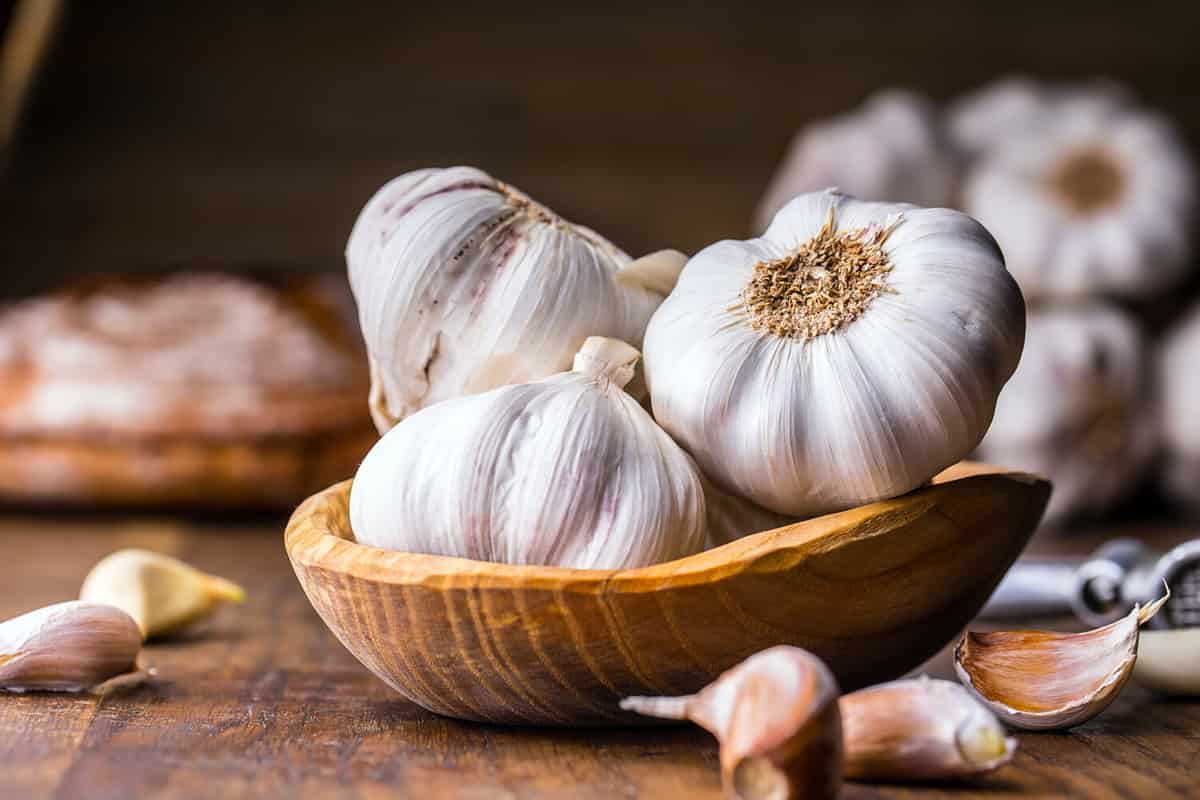
Garlic adds a depth of flavor to many dishes.
©Marian Weyo/Shutterstock.com
Garlic has a long history as a medicinal and culinary vegetable. It is believed to have come out of Central Asia around the same time as onions, 5000 years ago. This humble fragrant bulb was known throughout different countries and cultures. The ancient Greeks and Romans ate garlic for health benefits and strength. During the many plagues, people wore masks with garlic thinking it purified the air. Even the Vikings consumed garlic.
Early folklore about garlic chasing out evil spirits and protecting people from vampires probably stems from the fear of a blood disease, so people rubbed garlic on their houses and wore it around their necks. According to CNN, the actual blood disorder porphyria may have played into this garlic-vampire connection because people with porphyria are sensitive to garlic and sunlight. Plus, their gums often shrink up, making their teeth appear larger.
Garlic comes in hardneck and softneck varieties. The varieties are classified by flowers, hardiness, and the pattern that garlic cloves create. There are three varieties of garlic that fall under softneck, including artichoke garlic, silverskin garlic, and creole garlic. The other varieties are hardneck.
Nutritional Differences
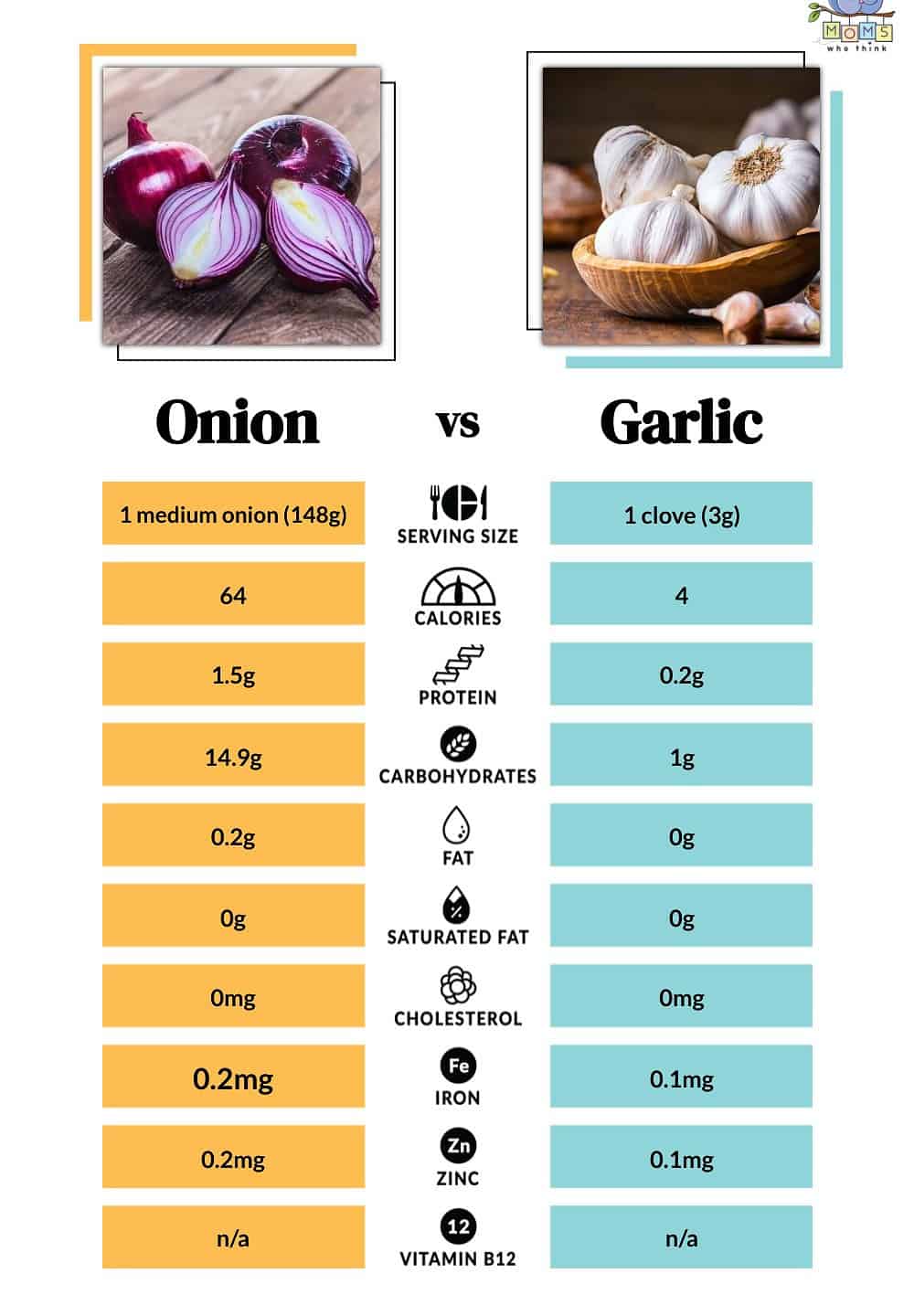
Onions and garlic both have a history of culinary and medicinal uses, but their nutritional profiles are not similar. One medium onion contains 64 calories and 14.9 grams of carbs. While one clove of garlic has four calories and one gram of carbs.
How to Use Onions in Cooking
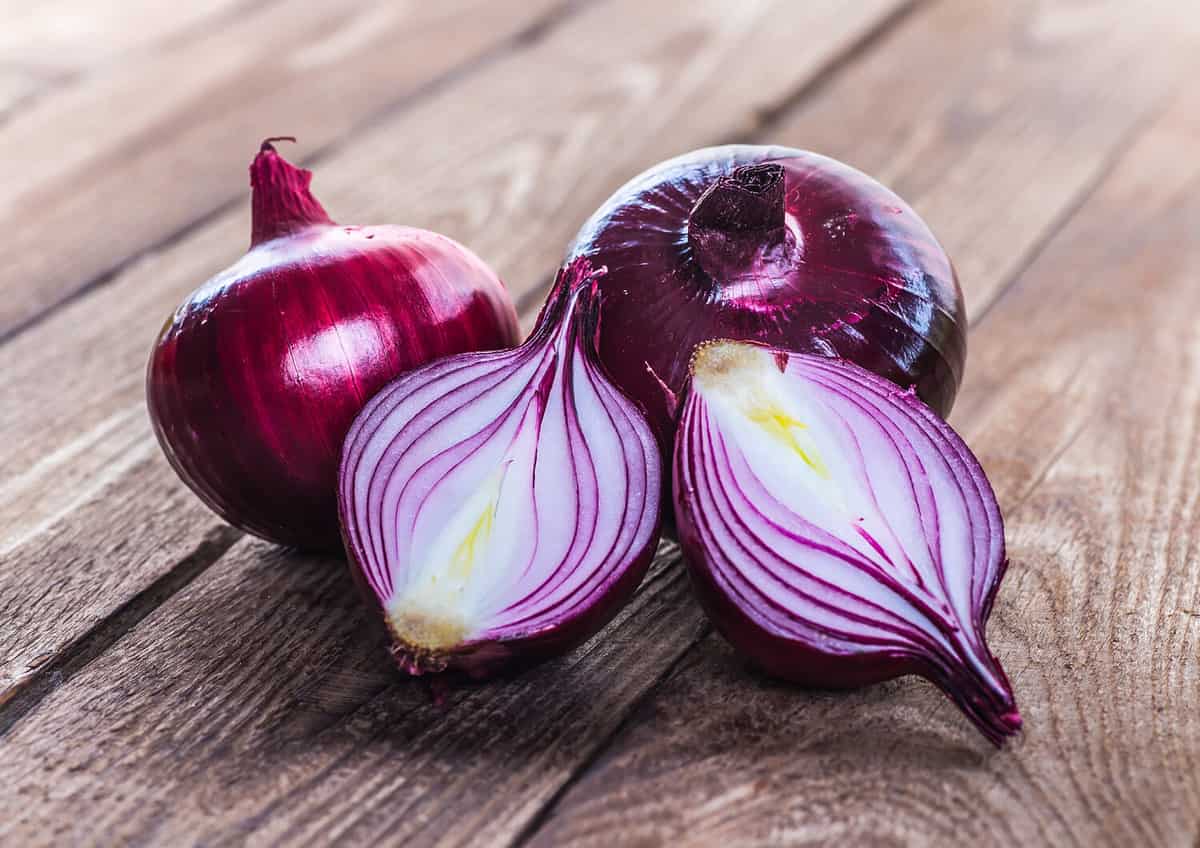
Raw red onions add a tangy crunch to dishes.
©Bukhta Yurii/Shutterstock.com
Roasted, grilled, boiled, sauteed, steamed, baked, and caramelized are just some of the ways to cook onions. Each variety of onion has distinct uses. We will take a look at some of the most common onion varieties and how to best use them in the kitchen.
White Onions
High water content keeps the flavor mild in white onions, so they don't have the sharp onion bite like other varieties. White onions are common in Latin American cooking. These onions are perfect in pico de gallo salsa and ceviche. Diced white onions with cilantro or other herbs are great sprinkled on tacos and hot dogs.
Yellow Onions
Yellow onion or Spanish onions are multi-purpose onion that works raw or cooked in a variety of cuisines. Chefs turn to this powerhouse onion for the basic mirepoix and sofrito that are the base of many dishes. Plus, the high sugar content in yellow onions makes them ideal for caramelizing. Cooking them low and slow will allow them to release their sugar for s sweet caramelization. Carmelized onions are perfect on a cheeseburger or cheeseburger pizza.
Red Onions
Red or purple onions are best in salads and for pickling. Their bright color and mild taste mean they are excellent raw. Red onions lose their flavor when cooked. Pickled red onions are an excellent addition to salads, burgers, and tacos.
- The must-have convenient reference guide for every home cook!
- Includes more than 8,000 substitutions for ingredients, cookware, and techniques.
- Save time and money on by avoiding trips to grab that "missing" ingredient you don't really need.
Green Onions and Spring Onions
Two types of onions that look similar, green onions and spring onions, are easy to grow and add something extra to dishes. Both green and spring onions have a small bulb and long green stalk. Green onions are harvested before the bulb has a chance to grow, and spring onions are matured green onions. They are both commonly used as a garnish or chopped and sprinkled on mashed potatoes, bowls of chili, or salads.
Sweet Onions
Maui, Vidalia, Walla Walla, and Bermuda are types of sweet onions. Sweet onions don't actually have more sugar in them. They have less sulfur which is what makes onions so tangy. With less sulfur, they taste sweet and are a great addition to salads, potatoes, burgers, or as a garnish. Sweet onions also work well in relishes, chutneys, dips, and spreads.
Two Ways To Cut Onions
There are different ways to cut an onion, but they all start with either rings or the French cut. Depending on how you plan to use the onion will determine the best cut.
To cut an onion into rings, start by slicing the onion lengthwise from the root. Cutting the onion this way severs the fibers holding the onion together, making them easier to separate for onion rings or burger slices.
The Julienne cut starts by cutting the onion in half, laying the flat side down, and thinly slicing without severing the fibers that hold it together. This cut is ideal for fajitas, pickling, or stir-frying.
How to Use Garlic in Cooking
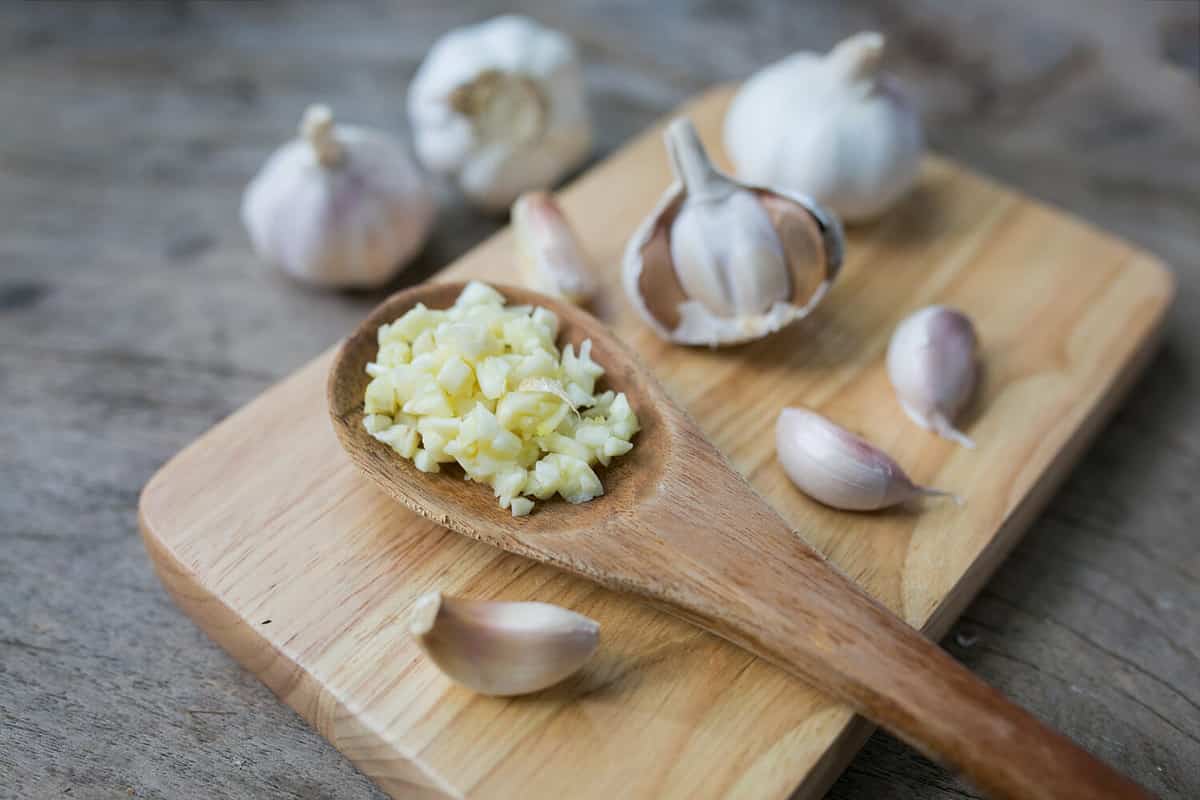
Garlic should be finely chopped for most recipes.
©pornpan sangkarat/Shutterstock.com
There are thousands of varieties of garlic; some are intense and pungent, and others have a mild taste. When you are using garlic in cooking, first, you need to choose which garlic is best for which type of dish.
Hardneck garlic has a strong flavor and produces garlic scapes. These are hardier plants and do better in cold climates. They produce few cloves but pungent cloves. Hardneck varieties are good for garlic bread, pizza, braised meats, and stir fry. Hardnecks are also the best garlic for roasting. Roasting garlic mellows the intensity and gives it a buttery rich texture.
Softneck garlic has leaves rather than scapes or stalks and is better suited to warmer climates. They produce many cloves per bulb and have a milder flavor. The mild flavor makes them a good choice for anything that requires raw garlic, like dips, dressings, and marinades. They are also good for soups and stews as they blend well and will not overpower the other flavors.
Garlic Scapes are the long green stalks of hardneck garlic varieties, and home chefs commonly use them similarly to green onions, chopped as a garnish. Garlic scapes are a delicacy because of their flavor but also their availability. They are only available at certain times of the year and can be expensive.
Garlic Chives are flowering ornamental plant that has long green stalks that are flat like a blessed of grass. They are common in Asian cuisines like Sesame Chicken and Chop Suey, and home chefs can find them in international or specialty markets. Garlic chives are different than garlic scapes as they do not produce a bulb. Instead, they produce edible white flowers. The white flowers are bursting with seeds and, if left alone, will scatter and repopulate themselves. Many ornamental gardens have garlic chives because not only are they edible with pretty white flowers, but they can deter garden bugs and pests like aphids and Japanese beetles.
A Quick Comparison of Onion vs. Garlic
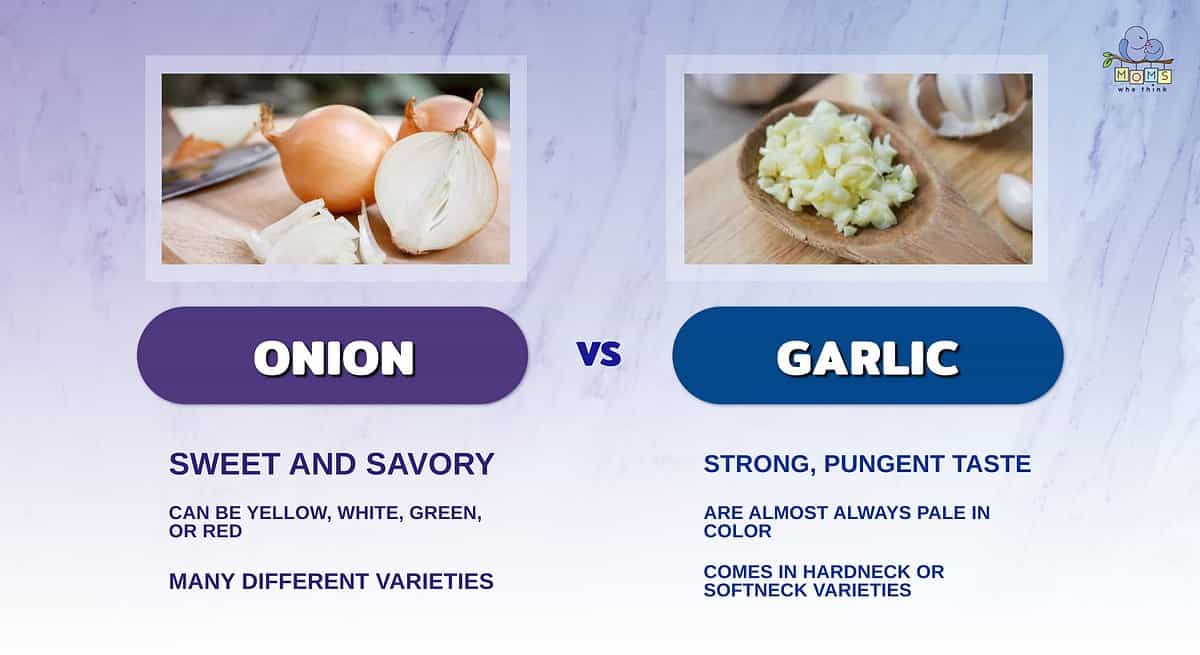
Onions and garlic are such important parts of a good, well-stocked kitchen. They go a long ways to make various dishes taste even better than they do in their regular forms. Understanding the differences between onions and garlic is crucial to being a skilled cook. Onions, when cooked, are sweet and savory, while garlic has a much stronger taste. Onions can come in a variety of shapes and types, while garlic is usually pale and is either hardneck or softneck. Which of these do you prefer?
Looking for a great new way to use onions? Take a look at this delicious chicken recipe:
Print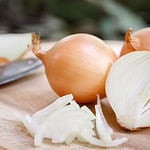
Crispy Onion Barbecue Chicken Fingers
- Total Time: 30 minutes
Ingredients
- 1 1/3 cups French fried onions (1 container)
- 1 pound boneless skinless chicken fingers
- 6 Tablespoons Onion flavored barbecue sauce
Instructions
- Preheat oven to 400°F. Place French fried onions in resealable plastic food storage bag; seal. Crush onions with meat mallet or rolling pin.
- Coat chicken fingers with barbecue sauce. Dip into crushed onions.
- Place chicken on baking sheet, bake in preheated oven for 15 minutes until chicken is crispy and no longer pink in center.
- Prep Time: 15 minutes
- Cook Time: 15 minutes
